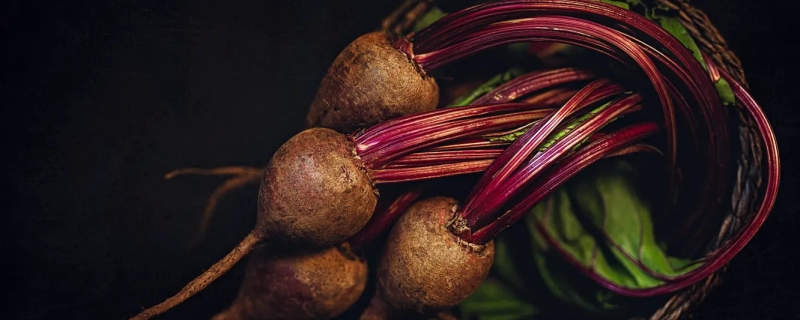Beet: Taste Profile, Aroma, Benefits and Health Risks
Beets, also known as beetroot, are a root vegetable widely recognized for their earthy sweetness and vibrant color. Originating from the Mediterranean region, beets are used in both sweet and savory dishes, and are celebrated for their health benefits, including their rich content of vitamins, minerals, and antioxidants. This article delves into the unique flavor profile of beets, their culinary applications, health benefits, and tips for selecting and using them.
Classification: Root Vegetable.
What does Beet taste like?

Primary Flavor Characteristics
Beets have an earthy, sweet flavor with hints of mineral and nutty undertones. The sweetness is more pronounced when the beets are roasted or steamed, while raw beets tend to be more earthy and slightly bitter. This distinctive, almost "earth-bound" taste is due to geosmin, an organic compound that gives beets their characteristic flavor.
Aromatic and Taste Nuances
The aroma of beets is subtly earthy, almost soil-like, which some describe as "fresh from the earth." When cooked, beets develop a caramelized sweetness that balances the earthiness. The flavor is mild yet rich, making it suitable for both simple salads and complex dishes.
Scientific Description of Taste and Aroma
- Aroma: Mildly earthy with soil-like undertones.
- Taste: Sweet, earthy, and nutty with slight mineral notes.
- Texture: Dense and slightly crisp when raw, tender and smooth when cooked.
In-Depth Flavor Analysis of Beets
Underlying Flavor Notes
Beets have a unique profile with several distinct notes:
- Natural Sweetness: When roasted or boiled, beets become sweet, similar to the taste of caramelized sugar.
- Earthy Undertones: The earthy flavor comes from geosmin, an organic compound that beets absorb from the soil.
- Mineral Notes: Beets have a mild metallic taste, particularly noticeable when eaten raw, due to their high iron and mineral content.
Impact of Cooking on Flavor
- Raw Beets: Crisp and earthy with a slight bitterness, often shredded for salads.
- Roasted Beets: Develops a rich, sweet flavor with a soft, smooth texture.
- Pickled Beets: Sweet, tangy, and slightly sharp, with the pickling brine adding acidity.
Textural Qualities
Raw beets are dense and crunchy, while cooked beets are tender, smooth, and almost buttery. The skin can be slightly rough, so it is often peeled before eating.
Culinary Uses of Beets
Primary Uses
- Salads and Raw Preparations: Thinly sliced or shredded beets add color and crunch to salads.
- Roasting and Baking: Roasting beets brings out their natural sweetness, making them ideal for side dishes or incorporating into baked goods.
- Soups: Beets are the main ingredient in borscht, a classic beet soup with a vibrant red color.
- Pickling: Pickled beets add a tangy, sweet flavor to salads and sandwiches.
- Smoothies and Juices: Beet juice is often added to smoothies for its vibrant color and earthy-sweet taste.
- Desserts: The natural sweetness of beets can be incorporated into cakes and brownies, adding moisture and depth of flavor.
Ideal Pairings for Beets
- Citrus Fruits: Orange and lemon add brightness and acidity to balance the earthiness of beets.
- Herbs: Dill, parsley, and mint complement beets’ earthy sweetness in salads and side dishes.
- Cheese: Goat cheese, feta, and blue cheese add creaminess and tang to balance beets' sweetness.
- Vinegar: Balsamic or apple cider vinegar adds acidity and enhances the sweet undertones of roasted beets.
- Nuts: Walnuts and hazelnuts add a crunchy texture that contrasts with the softness of cooked beets.
Health Benefits of Beets
Key Nutrients and Benefits
- Rich in Antioxidants: Beets contain betalains, powerful antioxidants that may help reduce inflammation and support cellular health.
- High in Folate: Folate is essential for DNA synthesis and cell growth, making beets a great addition to a balanced diet.
- Supports Heart Health: Beets are high in nitrates, which can improve blood flow and reduce blood pressure.
- Fiber Content: The fiber in beets promotes healthy digestion and helps maintain balanced blood sugar levels.
- Supports Athletic Performance: Beetroot juice is popular among athletes as it may improve stamina and oxygen utilization.
Potential Precautions
- Natural Sugars: Beets contain natural sugars, so those monitoring blood sugar may wish to enjoy them in moderation.
- Kidney Stone Risk: Beets are high in oxalates, which can contribute to kidney stones for some individuals.

Tips for Choosing and Storing Beets
How to Choose Quality Beets
- Firmness and Color: Look for firm, vibrant beets with smooth skin; avoid any that feel soft or shriveled.
- Leaves: If the greens are still attached, they should be bright and fresh, indicating freshness.
Storage Recommendations
- Refrigeration: Store beets in the refrigerator for up to two weeks. Remove the greens before storing, as they draw moisture from the root.
- Freezing: Beets can be cooked and frozen for later use in soups and smoothies.
Fun Facts About Beets
- Natural Food Dye: Beets have been used as a natural dye for centuries due to their vibrant red color.
- Rich Cultural History: Beets have been cultivated since ancient times, valued for their culinary and medicinal uses.
- Nitrate Source: Beets are one of the highest natural sources of nitrates, beneficial for cardiovascular health.








